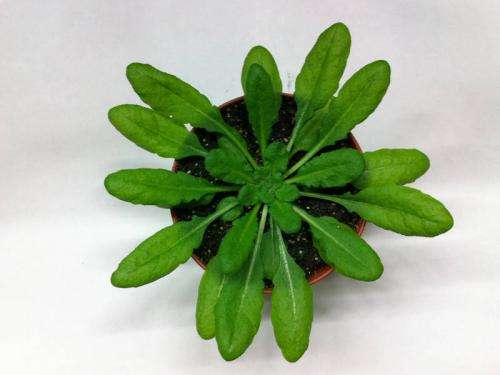Plants detect bacterial endotoxin in similar process to mammals

Similar to humans and animals, plants possess an innate immune system that protects them from invading pathogens. Molecular structures that only occur in pathogens enable their recognition and trigger the immune response. Lipopolysaccharide (endotoxin) is one such substance, occurring in the outer membrane of certain bacteria. A team of scientists from Technische Universitaet Muenchen (TUM) and the Leibniz Institute of Plant Biochemistry (IPB) in Halle has now described the first endotoxin immunosensor in plants.
Bacteria do not just attack people and animals, but also cultivated plants such as tomatoes, cabbages and rice - causing crop losses with significant economic impact around the globe. Plants are not defenseless, however. They possess an innate immune system equipped with various immunosensors that detect substances occurring only in microorganisms and trigger a defensive reaction. In mammals, for instance, toll-like receptor 4 (TLR4) detects lipopolysaccharide, which is also referred to as endotoxin and is the main component of the outer membrane of many bacterial pathogens.
Since plants also mount an immune response to lipopolysaccharide, the assumption was that they too possess an immunosensor for this substance. The nature of this sensor was previously unknown. Now, though, a multidisciplinary team of scientists from TUM, IPB and the Leibniz-Center for Medicine and Biosciences in Borstel has succeeded in decoding the detection mechanism for bacterial lipopolysaccharide in the model plant Arabidopsis thaliana (thale cress).
The search for the plant's lipopolysaccharide sensor was complicated by the fact that the endotoxin does not consist of a single defined molecule, but of a complex mixture of similar lipopolysaccharide molecules. For that reason, it has also not yet been possible to synthesize it for testing. So the analysis, purification and chemical separation of components of the lipopolysaccharide at the Borstel research center was a key prerequisite for the genetic and biochemical plant tests at TUM and IPB.
Protein LORE helps plants to fight bacteria
These tests allowed the scientists to determine which sensor Arabidopsis plants use to detect lipopolysaccharide. Their experiments showed that this function is performed by the LipoOligosaccharide-specific Reduced Elicitation (LORE) protein they discovered, which also initiates the subsequent immune response. However, LORE differs in its composition from endotoxin sensors in animals. So evolution has produced two separate instances of this detection principle, occurring independently in animals and in plants.
The team was also able to show that, despite the different sensors, both animals and plants detect the same component of lipopolysaccharide: lipid A. In humans and other mammals, lipid A can trigger an excessive immune response with sepsis and septic shock as life-threatening complications.
Interestingly, not all plants exhibit the LORE immunosensor - only crucifers. In addition to Arabidopsis, this family includes important crop plants such as brassica, mustard and rapeseed. However, the scientists also found that the sensor retains its function if transferred into other plants. It could therefore serve as a tool for researching and producing plants with improved resistance to bacterial pathogens, the scientists say.
More information: Stefanie Ranf, Nicolas Gisch, Milena Schäffer, Tina Illig, Lore Westphal, Yuriy A. Knirel, Patricia M. Sánchez-Carballo, Ulrich Zähringer, Ralph Hückelhoven, Justin Lee & Dierk Scheel, A lectin S-domain receptor kinase mediates lipopolysaccharide sensing in Arabidopsis thaliana, Nature Immunology, DOI: 10.1038/ni.3124
Journal information: Nature Immunology
Provided by Technical University Munich


















